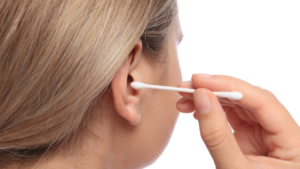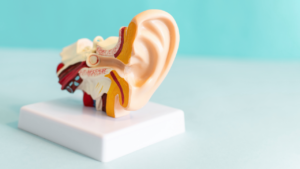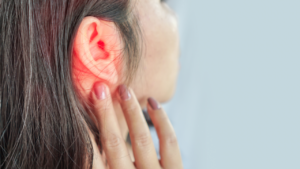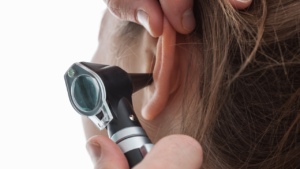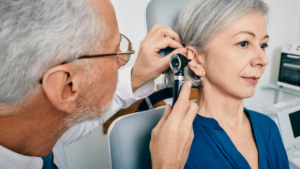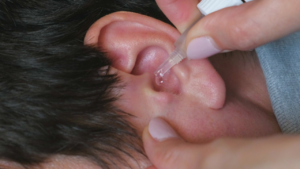
Have you ever wondered about the colour of your ear wax? Is dark brown ear wax normal? Dark brown ear wax may raise some concerns, but is it really something to worry about? In this article, we will explore the different types of ear wax, the causes of dark brown ear wax, and whether it is normal or not. We will also discuss methods for cleaning dark brown ear wax and when it might be necessary to seek medical help. Let’s dive in and uncover the truth about dark brown ear wax.
Key Takeaways:
- Dark brown ear wax is a common type of ear wax that can be caused by factors such as excessive production, accumulation of dirt and debris, infection, or certain medications.
- While dark brown ear wax may not always indicate a problem, it is important to monitor and maintain good personal hygiene habits to prevent potential issues.
- If you are experiencing discomfort or difficulty hearing due to dark brown ear wax, it is recommended to consult a doctor for proper cleaning and treatment methods.
What Is Ear Wax?
Ear wax, also known as cerumen, is a natural substance produced by glands in the ear canal.
Ear wax primarily consists of a mixture of shed skin cells, hair, and the secretion of two types of glands found in the ear canal. These glands, namely ceruminous and sebaceous glands, work together to create a waxy substance that helps protect the ear from dust, foreign particles, and microbial infections.
The ceruminous glands are specialised sweat glands that produce the main components of ear wax, while the sebaceous glands secrete oils that help lubricate the skin of the ear canal.
This ear wax, though often perceived as unhygienic, plays a crucial role in maintaining the health of the ear by trapping debris and aiding in the cleaning process. It acts as a natural self-cleaning agent for the ear canal, preventing the skin from drying out and reducing the risk of infections.
What Are The Types Of Ear Wax?
Ear wax comes in different types and colours, ranging from wet and sticky to dry and flaky.
Among the varieties of ear wax, wet wax is often the most common type, appearing yellow or light brown in colour. It is usually soft and sticky, aiding in trapping debris and preventing it from entering deeper into the ear canal.
On the other hand, dry ear wax is typically greyish and flaky, easily crumbling when touched. Individuals may also experience a mix of both wet and dry wax, which can affect the overall texture and consistency.
Yellow Ear Wax
Yellow ear wax is a common type of ear wax that can be influenced by genetic factors.
Individuals with yellow ear wax typically have a sticky and moist consistency in their ear wax. The yellow colouration comes from a higher concentration of lipids and oils compared to other types of ear wax. Genetics play a significant role in determining the colour of ear wax, with specific genes impacting the production of cerumen.
In some cases, yellow ear wax may be associated with a higher risk of developing certain ear conditions, such as ear infections or blockages. Understanding the genetic components of ear wax can provide insights into overall ear health and care practices.
Brown Ear Wax
Brown ear wax is another variant that may result from the accumulation of dirt and debris in the ear canal.
This type of ear wax can have a darker colour due to the presence of keratin, oils, and foreign particles. Factors such as poor personal hygiene, using cotton buds too aggressively, or living in a dusty environment can contribute to the darkening of ear wax.
While brown ear wax is generally not a cause for concern, it is essential to maintain proper ear hygiene to prevent excessive accumulation of dirt and debris, which can lead to ear infections or impact the effectiveness of hearing aids.”
Dark Brown Ear Wax
Dark brown ear wax can sometimes indicate an underlying infection within the ear canal.
When ear wax is darker in colour, it can suggest the presence of dried blood or other impurities, which might be linked to an ongoing infection. Ear infections are common culprits for dark brown ear wax, as the body produces more ear wax as a defence mechanism against infections. Poor ear hygiene, use of dirty instruments, or underlying skin conditions can also contribute to the discolouration of ear wax. It’s essential to address the root cause of the infection to effectively treat and prevent dark brown ear wax. Seeking medical advice and proper ear care can help resolve ear wax issues and prevent further complications.
Black Ear Wax
Black ear wax is a rare occurrence that may be linked to certain medical conditions or skin conditions.
Although most commonly ear wax tends to be yellowish-brown in colour, the occurrence of black ear wax is quite alarming. Some studies suggest that the colour variation may be attributed to the presence of excess melanin, the pigment that gives skin its colour. This has led to theories connecting black ear wax to certain medical conditions such as fungal infections, impacted earwax, or even genetic factors. Understanding the potential correlations between the colour of ear wax and underlying health issues can aid healthcare professionals in diagnosing and treating patients accordingly.
What Causes Dark Brown Ear Wax?
Dark brown ear wax can be caused by factors such as excessive production, infections, injuries, or certain medications.
Excessive production of ear wax, known scientifically as cerumen, can lead to its darkening in colour. This can happen when the glands in the ear canal produce more wax than necessary, causing it to accumulate and darken over time.
Infections, such as otitis externa or swimmer’s ear, can also contribute to the darkening of ear wax. When the ear canal becomes infected, it can cause inflammation and an increase in the production of cerumen, resulting in a darker colour.
Certain medications, such as those containing bismuth or other compounds, can cause changes in the composition of ear wax, leading to its dark brown appearance. It’s essential to consult a healthcare professional to determine the underlying cause and appropriate treatment for dark brown ear wax.
Excessive Production Of Ear Wax
The excessive production of ear wax, influenced by genetic factors or gland secretion, can lead to dark brown ear wax build-up.
Genetic variations can play a significant role in determining the amount and consistency of ear wax produced by an individual. Certain genes can result in increased secretion by the ceruminous glands, contributing to the build-up of wax. Environmental factors and habits, like frequent use of earphones or hearing aids, can exacerbate the issue.
To prevent excessive ear wax accumulation, individuals should avoid inserting cotton buds or other objects into the ear canal, which can push wax further inwards. Regular ear hygiene practices, such as using a few drops of olive oil to soften the wax, can aid in its natural expulsion. In cases of recurring problems, consulting a healthcare professional for safe removal is recommended.
Accumulation Of Dirt And Debris
The accumulation of dirt and debris in the ear canal is a common cause of dark brown ear wax formation.
When dirt gathers in the ear, it often mixes with natural oils and dead skin cells, leading to the dark color of ear wax. The dirt build-up can also affect the consistency of ear wax, making it harder and more challenging to expel naturally.
Hygiene plays a crucial role in preventing excessive accumulation, as regular cleaning with a soft, damp cloth or gentle ear cleaning solutions can help remove dirt before it transforms the ear wax color. Ensuring a clean environment around you, avoiding inserting objects into the ear canal can also prevent harmful build-up and maintain healthy ear hygiene.
Infection Or Injury
Infections or injuries to the ear canal can manifest as dark brown ear wax and may present symptoms like pain or discharge.
When the ear canal is compromised due to infections or injuries, the body’s defence mechanism often leads to the production of dark brown ear wax. This colour change can indicate the presence of blood or melanin, suggesting a more severe issue.
Individuals experiencing pain, especially when touching or pulling on the ear, coupled with unusual discharge, should seek immediate medical attention. These symptoms could signify a deeper underlying infection that requires professional evaluation and treatment.
Use Of Certain Medications
Dark brown ear wax can sometimes result from the use of specific medications, leading to side effects that should be discussed with a doctor.
Medications containing compounds like bismuth, acetaminophen, or ibuprofen can cause changes in ear wax colouration. This discolouration often occurs due to chemical reactions from these drugs. While dark brown ear wax is generally harmless, it could be a sign of a reaction to the medication. Certain drugs can lead to increased ear wax production, making it darker in colour. It’s crucial to monitor any changes in ear wax colour when taking medications and promptly notify healthcare providers about any concerning symptoms.
Is Dark Brown Ear Wax Normal?
Whether dark brown ear wax is considered normal can vary based on factors like age, genetics, or personal hygiene habits.
Dark brown ear wax is a common occurrence in individuals of all ages, but it may become more prevalent with increasing age due to changes in the composition of earwax. Age-related alterations in the consistency and colour of ear wax can lead to a darker appearance.
Genetics also play a significant role in determining the colour of ear wax, with some individuals naturally producing darker ear wax than others. This genetic predisposition can influence whether dark brown ear wax is considered normal for an individual.
Personal hygiene practices, such as the frequency of ear cleaning and the use of earbuds, can impact the colour and texture of ear wax. Poor hygiene habits may contribute to the accumulation of dirt and debris in the ears, leading to darker ear wax.
Age
As individuals age, the likelihood of experiencing dark brown ear wax may increase, especially among elderly adults with a history of ear issues.
Ear wax colouration can vary based on age and overall ear health. Elderly adults often face concerns related to changes in ear wax consistency and colour, which can be attributed to factors like reduced ear hygiene and decreased cell turnover.
- Regular ear check-ups and cleanings can help manage these issues and prevent complications.
- It is essential for older individuals to seek professional advice if they notice any sudden changes in their ear wax colour or texture.
By staying proactive and attentive to ear health, older adults can maintain optimal hearing experience as they age.
Genetics
Genetic factors play a role in determining ear wax colour, with certain families exhibiting a predisposition to dark brown ear wax due to inherited genes.
Interestingly, the colour of ear wax is determined by a specific gene known as ABCC11. This gene influences not only the colour but also the consistency of ear wax. In some families, a history of ear conditions like excessive wax production or ear infections can be traced back through generations, highlighting the strong genetic component in ear characteristics.
Personal Hygiene Habits
Maintaining good personal hygiene habits can help prevent the occurrence of dark brown ear wax and promote overall ear health.
Proper cleanliness practices such as regular cleaning of the outer ear with a damp cloth can aid in preventing wax buildup and potential infections. It’s important to avoid using cotton buds too deeply in the ear canal, as this can push wax further inside and cause blockages. Avoiding exposure to loud noises and protecting your ears during swimming or showering can help prevent damage and issues. Scheduling routine check-ups with a healthcare provider for ear care can ensure early detection of any problems and proper treatment.
How To Clean Dark Brown Ear Wax?
Cleaning dark brown ear wax can be achieved through methods like using ear drops, gentle irrigation, or seeking assistance from a doctor.
Regarding using ear drops, it is essential to follow the instructions provided on the packaging. Typically, the drops are inserted into the ear canal and allowed to sit for a few minutes to soften the wax before gently rinsing it out with warm water. For stubborn cases, it’s recommended to consult a medical professional such as an ear specialist or ENT doctor. These experts can perform a thorough examination and safely remove the impacted wax using specialised tools, ensuring the health and integrity of the ear canal.
Using Ear Drops
Ear drops are a common method for earwax removal, facilitating the softening and natural expulsion of built-up wax in the ear canal.
When using ear drops for earwax removal, it’s essential to follow a few simple steps to ensure effectiveness.
- Tilt your head to the side to allow the drops to enter the ear canal properly.
- Squeeze the recommended amount of drops into the ear and gently massage the area near the ear opening to help the drops penetrate.
- After a few minutes, you can straighten up, and the drops will start working to soften the wax build-up effectively.
It’s crucial to avoid inserting any objects into the ear to prevent pushing the wax deeper or causing injury. Regular use of ear drops can help maintain healthy ear hygiene and prevent potential issues.
Irrigation With Warm Water
Irrigating the ear with warm water is a gentle method to address earwax build-up, reducing the risk of infections and promoting ear hygiene.
Ear irrigation involves the gentle flushing of the ear canal with warm water to soften and dislodge accumulated earwax, making it easier to remove. By using this technique, individuals can effectively manage excessive earwax production, which can lead to discomfort and potential hearing issues.
The warm water helps to prevent infections by maintaining the ear’s natural cleaning mechanisms and preventing the build-up of harmful bacteria. This simple yet effective method is widely recommended by healthcare professionals for maintaining optimal ear health.
Visiting A Doctor
When dealing with persistent dark brown ear wax or signs of infection, it is advisable to seek medical attention from a doctor for proper evaluation and treatment.
Consulting a doctor for any ear-related concerns such as ear infections is crucial as they can accurately diagnose the issue and recommend appropriate treatment. Besides, self-diagnosing ear problems can lead to further complications and delays in receiving necessary medical advice. A professional assessment not only helps in identifying the underlying cause but also ensures that the treatment plan is tailored to your specific condition, promoting faster recovery and preventing potential complications. Timely medical advice is a key factor in ensuring optimal ear health and overall well-being.

